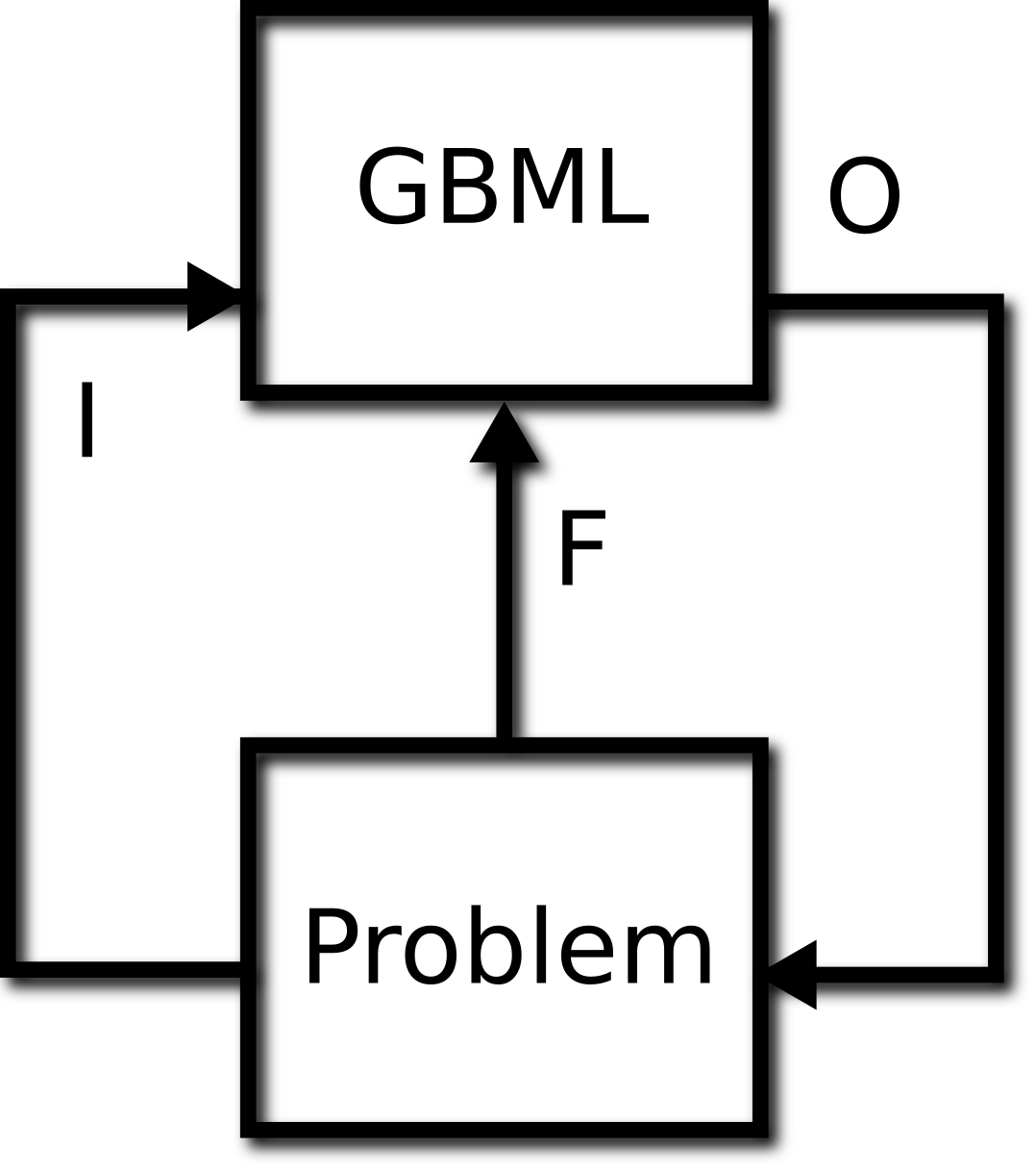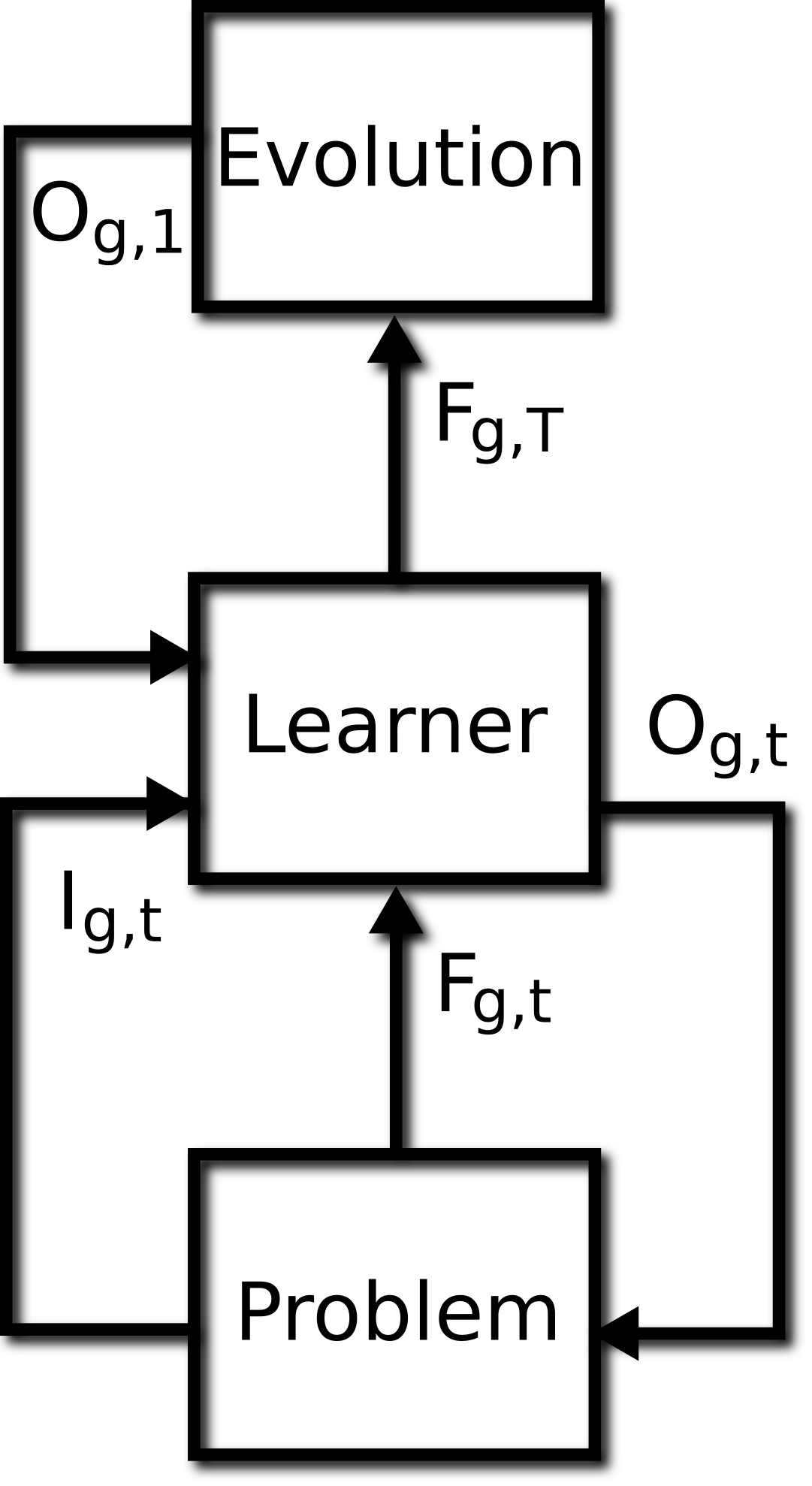

|
In order to contrast learning and meta-learning we define learning as a process which outputs a fixed hypothesis. Accordingly, when evolution adapts hypotheses it is a learner and when it adapts learners it is a meta-learner. However, this distinction between learning and meta-learning should not be overemphasised; if evolution outputs a learner with little plasticity then evolution may be largely responsible for the final hypothesis, and in this case plays both a learning and meta-learning role. Furthermore, both contribute to the ultimate goal of adaptation, and in §2.3 we will see ways in which they interact.
Evolution as learning is illustrated in the left of figure 1 which shows a GBML agent interacting directly with the learning problem. In contrast, the right of the figure shows GBML as meta-learning: the learner (or a set of learners) is the output of evolution, and the learner interacts directly with the learning problem while evolution interacts with it only through learners. At time step 1 of each generation evolution outputs a learning agent and at the generation's final step T it receives an evaluation of the learner's fitness. During the intervening time steps the learner interacts with the problem. This approach to meta-learning is universal as any learner can be augmented by GBML, and is related to the wrapper approach to feature selection in 3.1.


|
Meta-learning is a broad term with different interpretations but the essential idea is learning about learning. A meta-learner may optimise parameters of a learner, learn which learner to apply to a given input or a given problem, learn which representation(s) to use, optimise the update rules used to train learners, learn an algorithm which solves the problem, evolve an ecosystem of learners, and potentially be open-ended. See [288,108] on non-evolutionary meta-learning and [44,162,163,43] on the hyperheuristics (heuristics to learn heuristics) approach, of which a subset is evolutionary.
A third role for evolution is application to various sub-problems of learning including feature selection, feature construction, and other optimisation roles within learning agents. In these cases evolution neither outputs the final hypothesis nor outputs a learning agent which does so. Section §3.1 deals with such applications.